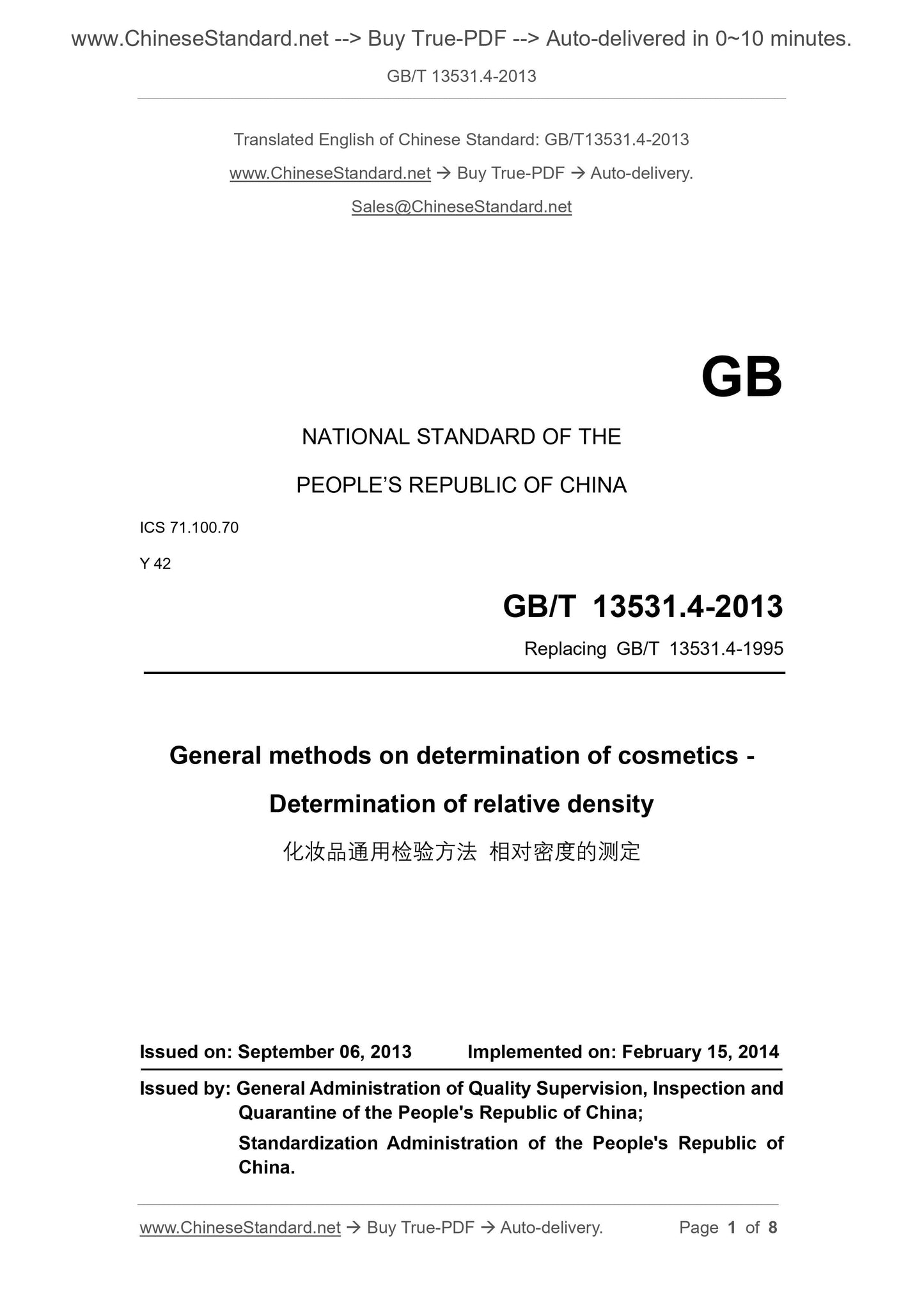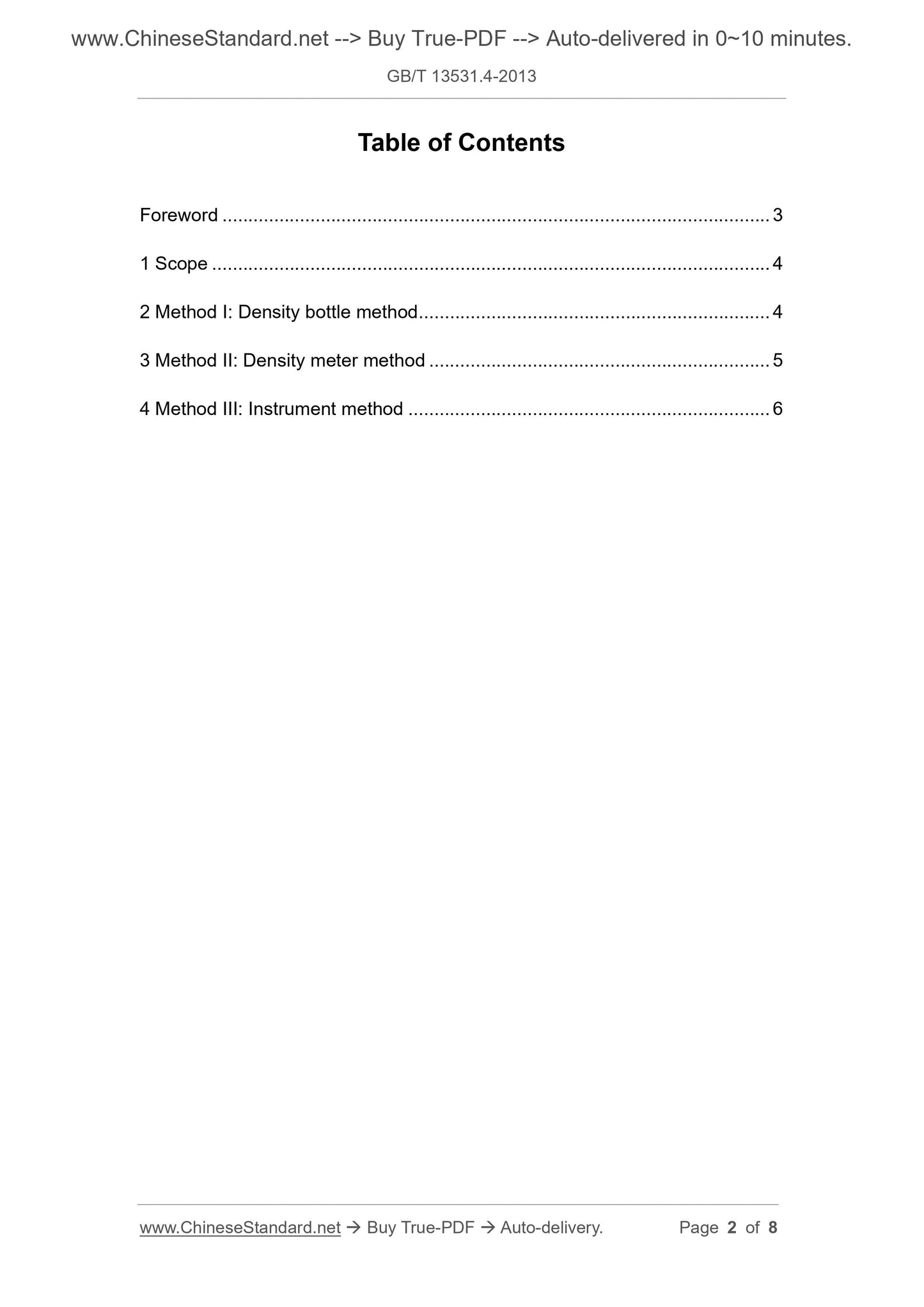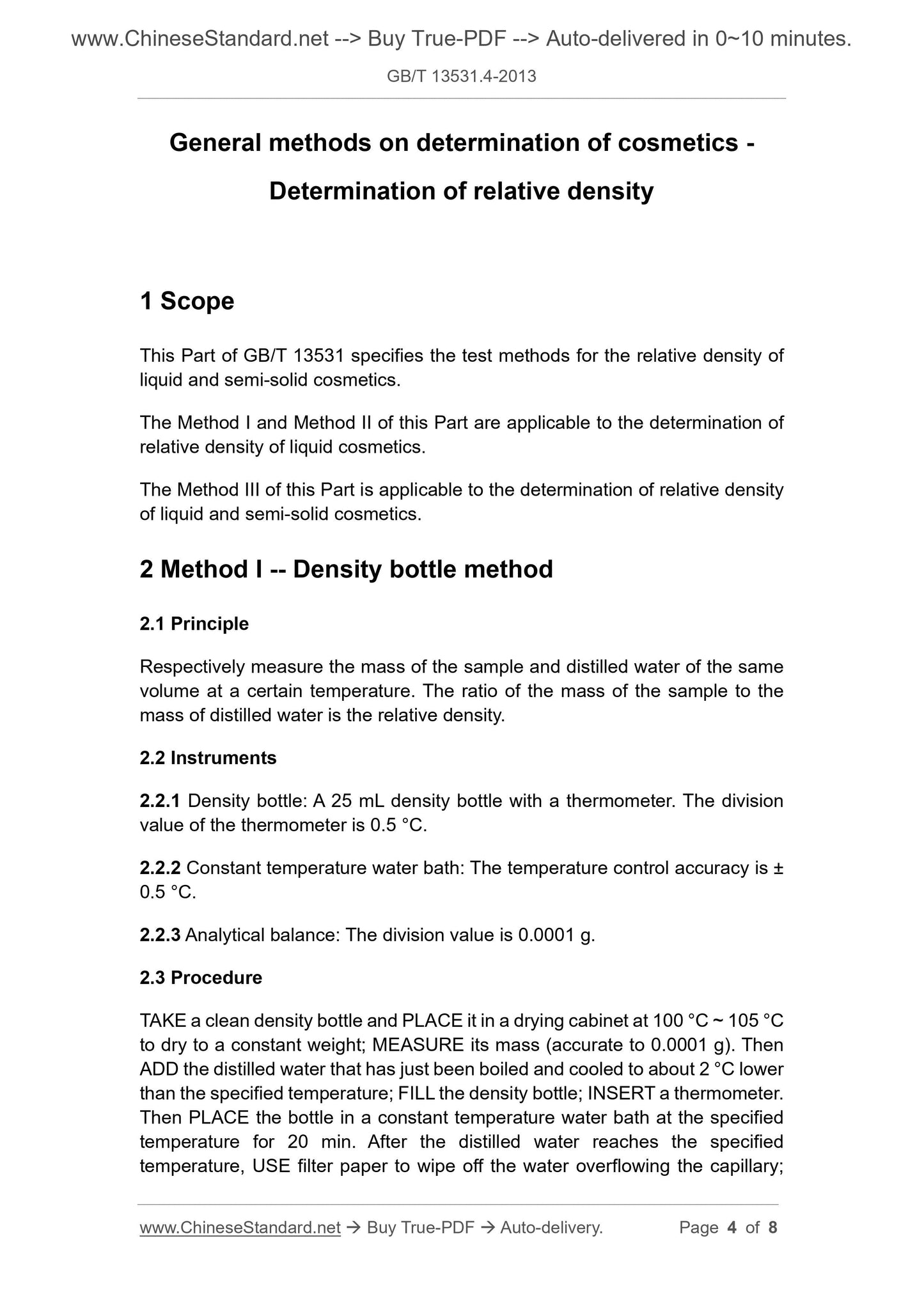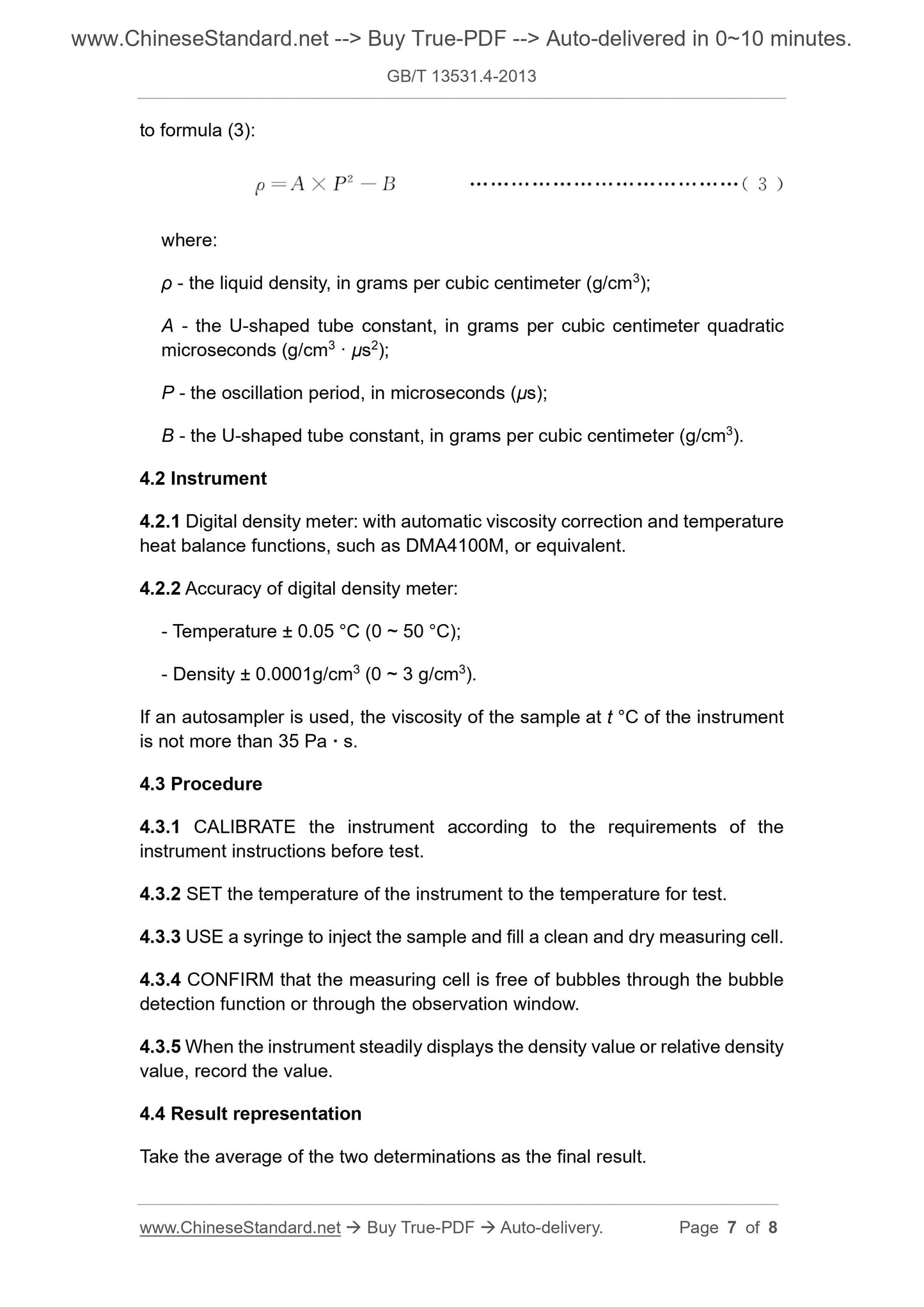1
/
of
4
www.ChineseStandard.us -- Field Test Asia Pte. Ltd.
GB/T 13531.4-2013 English PDF (GB/T13531.4-2013)
GB/T 13531.4-2013 English PDF (GB/T13531.4-2013)
Regular price
$105.00
Regular price
Sale price
$105.00
Unit price
/
per
Shipping calculated at checkout.
Couldn't load pickup availability
GB/T 13531.4-2013: General methods on determination of cosmetics -- Determination of relative density
Delivery: 9 seconds. Download (and Email) true-PDF + Invoice.Get Quotation: Click GB/T 13531.4-2013 (Self-service in 1-minute)
Newer / historical versions: GB/T 13531.4-2013
Preview True-PDF
Scope
This Part of GB/T 13531 specifies the test methods for the relative density ofliquid and semi-solid cosmetics.
The Method I and Method II of this Part are applicable to the determination of
relative density of liquid cosmetics.
The Method III of this Part is applicable to the determination of relative density
of liquid and semi-solid cosmetics.
2 Method I -- Density bottle method
2.1 Principle
Respectively measure the mass of the sample and distilled water of the same
volume at a certain temperature. The ratio of the mass of the sample to the
mass of distilled water is the relative density.
2.2 Instruments
2.2.1 Density bottle: A 25 mL density bottle with a thermometer. The division
value of the thermometer is 0.5 °C.
2.2.2 Constant temperature water bath: The temperature control accuracy is ±
0.5 °C.
2.2.3 Analytical balance: The division value is 0.0001 g.
2.3 Procedure
TAKE a clean density bottle and PLACE it in a drying cabinet at 100 °C ~ 105 °C
to dry to a constant weight; MEASURE its mass (accurate to 0.0001 g). Then
ADD the distilled water that has just been boiled and cooled to about 2 °C lower
than the specified temperature; FILL the density bottle; INSERT a thermometer.
Then PLACE the bottle in a constant temperature water bath at the specified
temperature for 20 min. After the distilled water reaches the specified
temperature, USE filter paper to wipe off the water overflowing the capillary;
to formula (3):
where:
ρ - the liquid density, in grams per cubic centimeter (g/cm3);
A - the U-shaped tube constant, in grams per cubic centimeter quadratic
microseconds (g/cm3 · μs2);
P - the oscillation period, in microseconds (μs);
B - the U-shaped tube constant, in grams per cubic centimeter (g/cm3).
4.2 Instrument
4.2.1 Digital density meter: with automatic viscosity correction and temperature
heat balance functions, such as DMA4100M, or equivalent.
4.2.2 Accuracy of digital density meter:
- Temperature ± 0.05 °C (0 ~ 50 °C);
- Density ± 0.0001g/cm3 (0 ~ 3 g/cm3).
If an autosampler is used, the viscosity of the sample at t °C of the instrument
is not more than 35 Pa · s.
4.3 Procedure
4.3.1 CALIBRATE the instrument according to the requirements of the
instrument instructions before test.
4.3.2 SET the temperature of the instrument to the temperature for test.
4.3.3 USE a syringe to inject the sample and fill a clean and dry measuring cell.
4.3.4 CONFIRM that the measuring cell is free of bubbles through the bubble
detection function or through the observation window.
4.3.5 When the instrument steadily displays the density value or relative density
value, record the value.
4.4 Result representation
Take the average of the two determinations as the final result.
Basic Data
| Standard ID | GB/T 13531.4-2013 (GB/T13531.4-2013) |
| Description (Translated English) | General methods on determination of cosmetics -- Determination of relative density |
| Sector / Industry | National Standard (Recommended) |
| Classification of Chinese Standard | Y42 |
| Classification of International Standard | 71.100.70 |
| Word Count Estimation | 6,688 |
| Older Standard (superseded by this standard) | GB/T 13531.4-1995 |
| Regulation (derived from) | National Standards Bulletin 2013 No. 17 |
| Issuing agency(ies) | General Administration of Quality Supervision, Inspection and Quarantine of the People's Republic of China, Standardization Administration of the People's Republic of China |
| Summary | This standard specifies: liquid, semi-solid cosmetic relative density test methods. The standard of the first method, the second method is suitable for liquid cosmetic relative density determination. The third method is applicable to the standard liquid, |
Share







